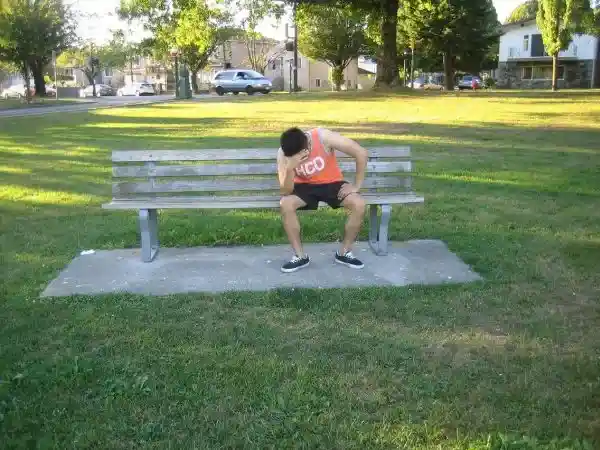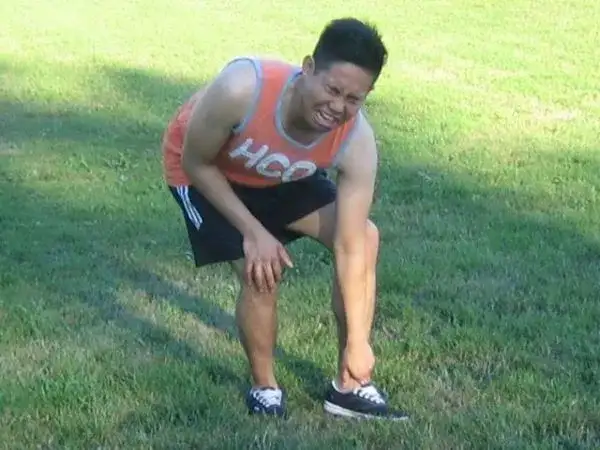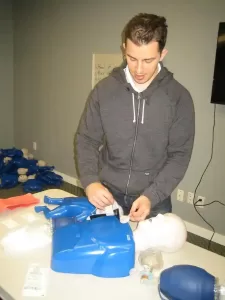Dry eyes
A dry eye is a condition that occurs when the tears cannot provide adequate lubrication for the eyes. Tears are a combination of water, mucus and fatty oils which help in making the surface of the eyes become smooth and clear as well as helping in protecting the eyes from infections.

Athlete’s foot
Athlete’s foot is a fungal infection affecting the feet which is also known as tinea pedis. The fungus thrives mostly in warm and moist areas between the toes and the affected skin

Black widow spider bites in children
The black widow spider has small black body with a red hour-glass shape on the stomach area and a bite is very poisonous which contains chemicals that make people sick.

There are many reasons why people decide to take a first aid training course. It might be due to the nature of one’s work, or because of the desire to help injured persons during accidents. Regardless of the reason as to why one would want to become a trained first aider, this is an important skill to have. It can help you save someone’s life. However, before you decide to enroll for any kind of first aid program, you need to know the different types of courses that are available. Some courses are more general while others are suited for certain types of accident victims. Knowing the various kinds of training programs that are available for aspiring first aiders will help you to choose a suitable course for you.
Emergency First Aid Course

Marine First Aid Training
This course is suitable for people who work on the water. In fact, marine first aid training is a prerequisite skill for rescue divers, sailors and lifeguards. However, anyone can enrol for this course, especially if you spend a lot of time swimming. This course trains students how to pull drowning victims out of the water, performing CPR among other things.
Life Support First Aid Course
People who are professional first aiders such as paramedics and medical staff are required to take the life support first aid course. For this course, you will learn how to provide emergency medical care to victims involved in life threatening accidents.
Baby and Child First Aid Training
First aid and CPR for infants is different from that given to adults. The reason for this is that babies are fragile than adults. The baby and child first aid training will equip you with skills needed in order to attend to children during accidents. By taking this course, you will get to learn about CPR for children, the correct recovery positions, breathing disorders and many other first aid skills.
Keep in mind that these are just some of the most common first aid training courses. There are many more specific courses available, thus make sure to choose one that is suitable for your profession or a more general first aid course.

Remedies for pinpoint petechiae
Pinpoint petechiae are round spots that develop on the skin due to bleeding. Generally, they are tiny bruises caused by damaged capillaries under the skin. It causes the petechiae becoming brown, red and purple. They form in clusters and looks like a rash. They are flat, does not change color when pressing on them and […]

Dealing with a stinging nettle
A stinging nettle is an herbaceous perennial or has herbal properties. The leaves and stems are covered with brittle and hollow a structure that looks like hair. The hairs are like a hypodermic needle when accidentally brushing against them and chemicals flow through the tubes and result to rashes and stinging sensations. Symptoms of sting […]

How to treat intercostal muscle strain
Intercostal muscle strain is a condition that results to chest pain with movement of the upper body, twisting, breathing, sneezing and coughing. An intercostal muscle is muscles found between the ribs and attaches the ribs together. The muscles functions for the protection of the chest silhouette, for easy relaxation and contraction of the chest wall […]

How to treat gluteus minimus strain
Gluteus minimus strain is the stretching or tearing of the tendon or muscles of the deepest gluteal muscles. It functions for the flexing and medially rotation of the hip or bends the hip forward and rotates it in inward direction. The strain is usually caused by performing many activities and very fast. Symptoms of gluteus […]
